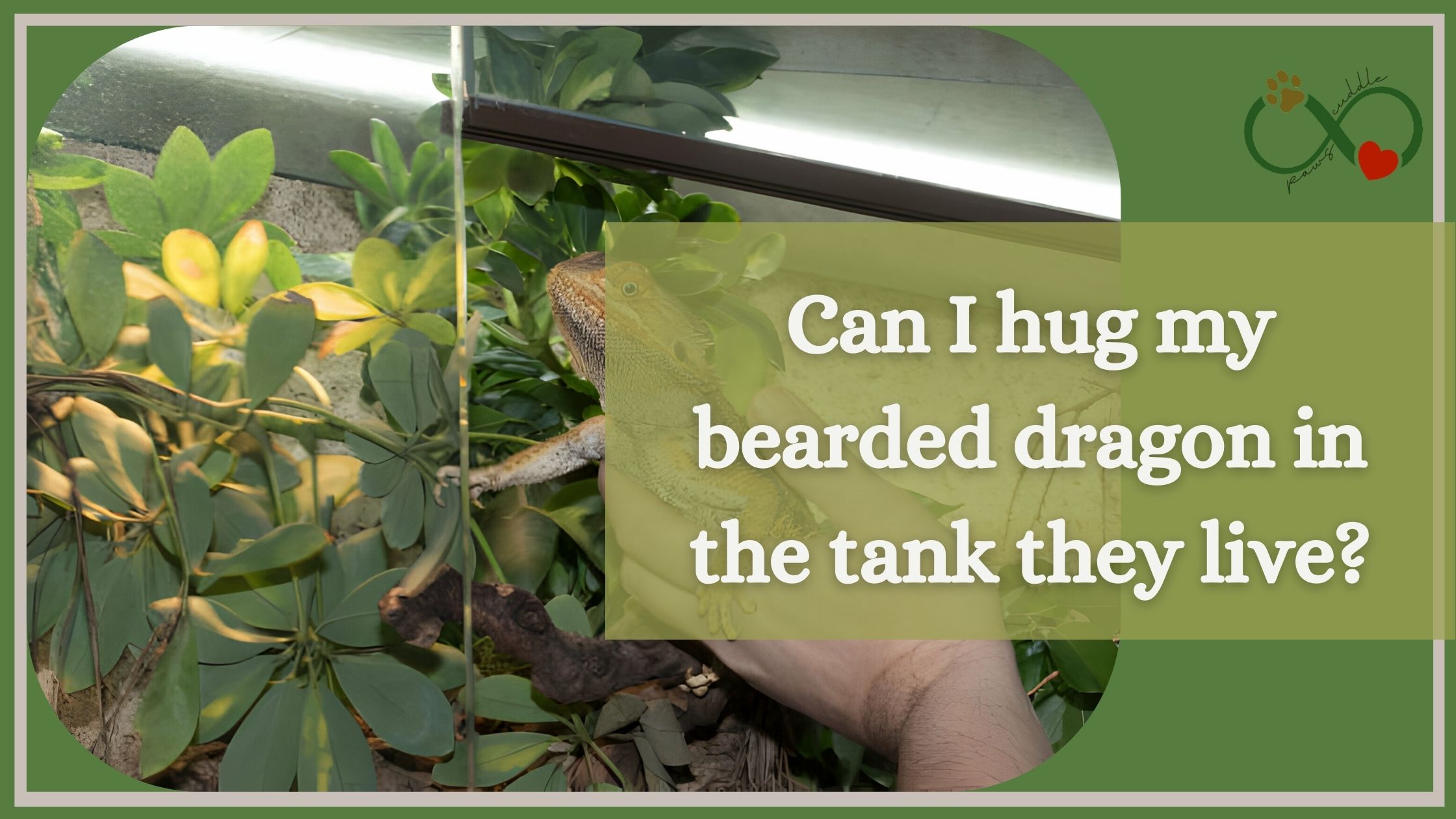Bearded dragons are intriguing reptiles recognized for their kind natures and distinct personalities.
As reptile fans and pet owners, we naturally want to engage with and care for our scaly pets.
One often-asked issue among bearded dragon owners is whether it is safe to hug these reptiles while they are within their tanks.
To go into the details, can I hug my bearded dragon in the tank they live in?
Understanding pet bearded dragons’ behavioral features, habitat demands, and physical sensitivity is critical.
Also, if your furry fam finds my blog well enough, read my other blogs.
Bearded dragons, technically known as Pogona, are native to Australia and have grown in popularity as pets worldwide because of their manageable size, unusual look, and generally peaceful behavior.
These reptiles have a reputation for building close ties with their owners, demonstrating a level of friendliness that may drive pet owners to seek physical affection, such as hugging, as a means of bonding.
To understand pet bearded dragons’ unique needs and preferences, one must first study their native habitat.
These reptiles live in dry habitats in the wild, including deserts, forests, and grasslands.
Their surroundings usually allow enough room for exploration, basking, and thermoregulation.
Creating a natural habitat in captivity in their tank is critical for their health.
A basking area with a heat source is the most critical component of a bearded dragon’s tank layout, as these reptiles are ectothermic and require external heat sources to maintain their body temperature.
Along with the basking position, the tank should provide hiding spots, a suitable substrate, and access to fresh water.
The tank’s proportions should be appropriate for the size of the pet bearded dragon, providing enough space for movement and exploration.
A pet bearded dragon’s health depends on having a correct tank configuration.
One of the most important features is the availability of a basking space with a consistent heat source.
Bearded dragons are ectothermic, using external heat to control their body temperature.
This basking zone allows them to absorb warmth while maintaining their metabolic function.
It is best to add a heat lamp or heating pad in this area to mimic their original habitat’s natural circumstances.
View this post on Instagram
Can you cuddle your pet bearded dragon in their tank?
While these reptiles may tolerate some touch and engagement, physical contact should be cautiously approached.
Bearded dragons’ skin is thin and sensitive, and excessive handling, particularly in an enclosed environment like their tank, can easily harm or upset them.
According to research, bearded dragons may interpret gestures, such as embraces, as threats or stressful activities.
In their native environment, these reptiles are more prone to use social behaviors such as head bobbing, arm waving, and even mild touching to establish communication and hierarchy.
Attempting to embrace a bearded dragon pet may be seen as intrusive, resulting in discomfort, anxiety, or defensive behaviors.
Furthermore, the tank acts as a domain for pet bearded dragons, and violating their area may make the lizard feel trapped or threatened.
This might result in protective actions, including hissing, puffing up, or biting, which can be dangerous to the person and the cat. Respecting these creatures’ boundaries and emphasizing their comfort and well-being is critical.
Hugging can induce stress, but there are also hygienic concerns to consider.
Like many other reptiles, bearded dragons can contain germs such as Salmonella, which can be transferred to people by direct contact.
While reasonable hygiene procedures, including handwashing, can help to reduce the risk, it is still vital to remember when considering intimate contact with these creatures.
Like many other reptiles, bearded dragons can contain germs such as Salmonella.
This bacteria may be found on their skin, droppings, and other surfaces in their surroundings.
While the danger of catching Salmonella from a bearded dragon pet is low, it is critical to be cautious and aware of potential transmission vectors.
Direct contact with a bearded dragon, particularly touching or cuddling, might increase the likelihood of contracting these germs.
Salmonella is known to cause gastrointestinal infections in people, resulting in symptoms such as diarrhea, fever, and stomach cramps.
While the degree of sickness varies, it is critical to implement preventative steps to reduce the chance of transmission.
To maintain a pleasant relationship with your bearded dragon, focus on other types of engagement consistent with their natural habits.
Observing their body language and responding accordingly will help to foster a healthy relationship.
Hand-feeding, allowing them to climb on you freely, and creating a stimulating atmosphere with enrichment items are all ways to interact with your bearded dragon pet without jeopardizing their health.
To summarize, you must remember to include your bearded dragon within their tank because of the risk of stress, perceived dangers, and cleanliness issues.
While these reptiles may create close ties with their owners, interactions must be approached with respect for their everyday behaviors and environmental demands.
Building trust with constructive and non-intrusive activities will help you and your scaly friend have a more rewarding connection.
Always emphasize your pet bearded dragon’s well-being, providing a pleasant and enriching living environment that matches their natural habitat.
